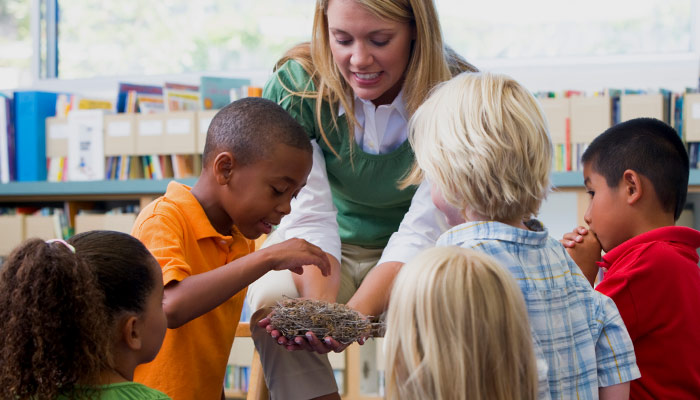While we believe that the books and resources recommended may be of value to you, keep in mind that these are suggestions only and you must do your own due diligence to determine whether the materials are appropriate and suitable for your use. PNC has no sponsorship or endorsement agreement with the authors or publishers of the materials listed.
HABITATS

Natural Nests
Children will gather materials to build a bird’s nest, part of a bird’s habitat.

Lesson Objective
Children will learn about a bird’s habitat by creating a bird’s nest.
Science
What You'll Need
- Pictures of a variety of birds’ nests
- Brown coffee filters - 1 for each child and labeled with their name
- Paper lunch bags – 1 for each child and labeled with their name
- Glue
- Permanent marker
- Newspaper or wax paper
What To Do
Note: This activity includes a nature walk outside.
- Examine the pictures of the different nests and have the class brainstorm about what materials the birds use to make their nests.
- Ask them what materials found in nature could be used to make nests.
- Give each child a paper bag with their name on it, and take them outside to find materials to build their own nests.
- Upon returning to the classroom, give each child a brown coffee filter and glue. Have the children build their own nests in the coffee filter.
- Encourage them to share their materials.
- When the glue dries, ask each child to talk about his or her creation.
Resources
Home School Resources
Home educators: use these printable lesson PDFs to teach this lesson to your home schoolers. They're available in English and Spanish.
Content Provided By
Common Core State Standards Initiative – These lessons are aligned with the Common Core State Standards ("CCSS"). The CCSS provide a consistent, clear understanding of the concepts and skills children are expected to learn and guide teachers to provide their students with opportunities to gain these important skills and foundational knowledge [1]. Visit the CCSS


